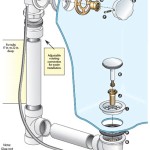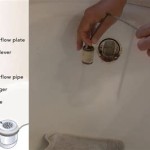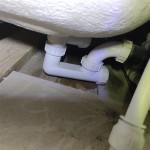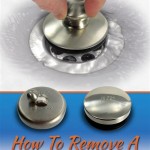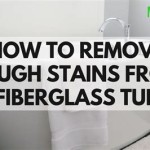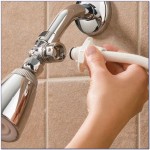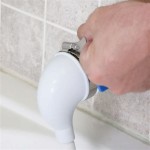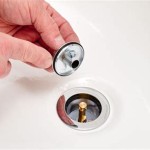Bathtub Stopper Filter Replacement: A Comprehensive Guide
The bathtub stopper filter, often an overlooked component of the drainage system, plays a crucial role in maintaining the functionality and hygiene of a bathtub. This small device prevents hair, soap scum, and other debris from entering the drainpipe, thereby mitigating the risk of clogs and potential plumbing issues. Over time, however, these filters can become clogged, damaged, or simply wear out, necessitating replacement to ensure optimal bathtub drainage and prevent more significant problems.
This article provides a comprehensive guide to bathtub stopper filter replacement, covering the purpose of the filter, identifying the need for replacement, selecting the appropriate replacement filter, and offering step-by-step instructions for the replacement process. Understanding these aspects will empower homeowners to address minor drainage issues promptly and effectively, potentially saving on costly plumbing repairs.
Understanding the Purpose and Function of a Bathtub Stopper Filter
Bathtub stopper filters are designed to capture debris before it enters the drainpipe. This is essential because hair is a primary culprit in drain clogs. Hair tends to bind with soap scum and other sticky residues, forming a mass that can restrict water flow and eventually completely block the drain. Similarly, small pieces of soap, bath bombs, and other bath products can contribute to clogs if they are not intercepted by the filter.
The filter itself is typically a small, perforated or mesh-like component situated directly beneath the bathtub stopper. Its design allows water to pass through while trapping larger particles. The effectiveness of the filter depends on its material, the size of its perforations, and how well it is maintained. Regular cleaning is crucial to prevent the filter from becoming overwhelmed and losing its effectiveness, but even with diligent maintenance, replacement eventually becomes necessary.
Without a functioning filter, debris will accumulate in the drainpipe, leading to slow drainage. This can create unsanitary conditions as stagnant water provides a breeding ground for bacteria and mold. Furthermore, persistent clogs can put stress on the plumbing system, potentially leading to leaks or burst pipes, which can cause significant water damage and require extensive repairs.
Identifying the Need for Bathtub Stopper Filter Replacement
Several indicators suggest that a bathtub stopper filter requires replacement. Recognizing these signs early can help prevent more serious drainage issues. The most common symptom is slow or sluggish draining of the bathtub. If the water takes significantly longer to drain than usual, even after cleaning the visible drain area, it is likely that the filter is partially or completely blocked.
Another sign is a foul odor emanating from the drain. Trapped debris can decompose over time, releasing unpleasant smells. Even if the drain appears clear, a lingering odor may indicate that the filter is harboring decaying matter. This is particularly true if the odor persists after cleaning the drain with conventional methods.
Visible damage to the filter itself is another clear indication of the need for replacement. Cracks, tears, or corrosion can compromise the filter's ability to effectively trap debris. If the filter is made of plastic, it may become brittle and break apart. Metal filters can corrode due to constant exposure to water and soap. Even if the damage appears minor, it is best to replace the filter to prevent small pieces from entering the drainpipe and causing a clog further down the line.
Difficulty in removing or installing the stopper can also indicate a filter problem. If the filter is stuck or difficult to detach, it may be corroded or encrusted with mineral deposits. Attempting to force the removal can damage the stopper mechanism and potentially cause further problems. In such cases, replacing both the filter and the stopper assembly may be necessary.
Finally, if regular cleaning fails to improve drainage or eliminate odors, it is likely that the filter is beyond repair and needs to be replaced. Repeated attempts to clean a severely clogged or damaged filter can be time-consuming and ultimately ineffective. Replacing the filter is often the most efficient and cost-effective solution.
Selecting the Correct Replacement Bathtub Stopper Filter
Before attempting to replace the bathtub stopper filter, it is crucial to select the appropriate replacement. Different types of bathtubs and stoppers utilize different filter designs, so choosing the wrong filter can result in improper fit and ineffective drainage. The first step is to identify the type of stopper mechanism in the bathtub. Common types include lift-and-turn stoppers, pop-up stoppers, toe-touch stoppers, and flip-it stoppers.
Lift-and-turn stoppers typically have a knob on top that is rotated to open and close the drain. Pop-up stoppers are activated by a lever located near the overflow drain. Toe-touch stoppers are opened and closed by pressing down on the stopper with a toe. Flip-it stoppers use a lever that flips to control the drain. The type of stopper mechanism will often dictate the type of filter used.
Once the stopper type is identified, the existing filter needs to be examined. Remove the stopper and carefully inspect the filter's design, size, and material. Take note of any unique features or dimensions. If possible, bring the old filter to a hardware store or plumbing supply store to compare it with available replacements. This will help ensure an exact match.
If the old filter is not available, measure the diameter and height of the drain opening. This information can be used to narrow down the selection of replacement filters. Many online retailers offer detailed product specifications and diagrams that can assist in finding a compatible filter. Pay attention to the material of the replacement filter. Common materials include plastic, stainless steel, and brass. Stainless steel and brass filters generally offer greater durability and resistance to corrosion compared to plastic filters.
In some cases, it may be necessary to replace the entire stopper assembly, including the filter. This is often the case if the stopper mechanism is damaged or corroded. Stopper assemblies are typically sold as complete kits that include the stopper, filter, and associated hardware. Replacing the entire assembly can ensure a proper fit and optimal drainage performance.
Step-by-Step Guide to Replacing a Bathtub Stopper Filter
Replacing a bathtub stopper filter is a relatively straightforward task that can be accomplished with a few basic tools and a little patience. The following steps provide a comprehensive guide to the replacement process:
Step 1: Gather the necessary tools and materials. This includes the replacement filter, a screwdriver (if needed to remove the stopper), pliers (if the filter is stuck), a cleaning brush, and a rag or paper towels. Having these items readily available will streamline the replacement process.
Step 2: Remove the existing stopper. The method for removing the stopper varies depending on the type of stopper mechanism. Lift-and-turn stoppers typically unscrew from the drain. Pop-up stoppers may require removing a lever located near the overflow drain. Toe-touch stoppers often twist and pull out. Flip-it stoppers simply lift out. Refer to the manufacturer's instructions for the specific stopper type if needed. If the stopper is difficult to remove, try gently wiggling it or using pliers to gain a better grip. Avoid applying excessive force, as this can damage the stopper or drain.
Step 3: Remove the old filter. Once the stopper is removed, the old filter should be accessible. In some cases, the filter is attached to the stopper itself. In others, it is located inside the drain opening. If the filter is easily removable, simply lift it out. If it is stuck, use pliers to gently pry it loose. Be careful not to damage the drain or surrounding area during the removal process. If the filter is heavily corroded or encrusted with mineral deposits, consider soaking it in vinegar or a descaling solution for a few minutes to loosen the debris before attempting removal.
Step 4: Clean the drain area. After removing the old filter, thoroughly clean the drain opening. Use a cleaning brush to remove any remaining debris, soap scum, or mineral deposits. Rinse the area with water to flush out any loose particles. This step is crucial for ensuring a proper seal with the new filter and preventing future clogs. Consider using a drain cleaner to further remove any buildup in the drainpipe. However, be cautious when using chemical drain cleaners, as they can be corrosive and may damage certain types of plumbing.
Step 5: Install the new filter. Insert the new filter into the drain opening. Ensure that it fits snugly and is properly aligned. If the filter is attached to the stopper, securely attach it according to the manufacturer's instructions. Some filters may require a specific orientation to function correctly. Refer to the product packaging for guidance.
Step 6: Reinstall the stopper. Reinstall the stopper according to the removal instructions, reversing the process. Ensure that the stopper is securely attached and functions properly. Test the stopper by filling the bathtub with water and observing the drainage. If the water drains slowly or leaks, check the filter and stopper for proper installation and alignment.
Step 7: Test the drainage. After reinstalling the stopper, fill the bathtub with a few inches of water and release the stopper. Observe the drainage to ensure that the water flows freely and quickly. If the drainage is still slow, double-check the filter and stopper for proper installation and alignment. It may be necessary to repeat the cleaning process to remove any remaining debris in the drainpipe. If the problem persists, consider consulting with a professional plumber.
Step 8: Dispose of the old filter properly. Dispose of the old filter in a responsible manner. If the filter is made of plastic, recycle it if possible. If it is made of metal, dispose of it according to local waste disposal guidelines. Avoid flushing the old filter down the toilet, as this can cause clogs in the sewer system.

43mm Bathtub Stopper Replacement Bath Bounce Waste Plug Collector Water Filter

43mm Bathtub Stopper Replacement Bath Bounce Waste Plug Collector Water Filter

Universal Bathtub Stopper For 1 6 2 0 Drain Stoppers With Tub Hair Catcher Upgraded Of Brass Bath Pop Up Bathroom Replacement Com

Danco Lift And Turn Drain Stopper In Chrome The Bathtub Shower Accessories Department At Com

Stainless Steel Drain Stopper Bathtub Plug Replacement Sink Temu

Drain Buddy Tub Stopper And Hair Catcher Solutions
:max_bytes(150000):strip_icc()/bathtub-drain-stopper-types-2718995-01-35b72b9323884e12bcd7bff7bddc755e.jpg?strip=all)
The 7 Common Types Of Bathtub Drain Stoppers

Universal Pop Up Bounce Core With Stainless Steel Hair Catcher Bathroom Sink Strainer Bathtub Stopper Basin Drain Filter Joom

Bathtub Drain Stopper Bathroom Bath Tub Sink Waste Plug Replacements

Qenwkxz Pop Up Bathtub Drain Plug Chrome Brass Tub Stopper Sy Filter Hair Strainer Replacement Durable Sink For Com
Related Posts

